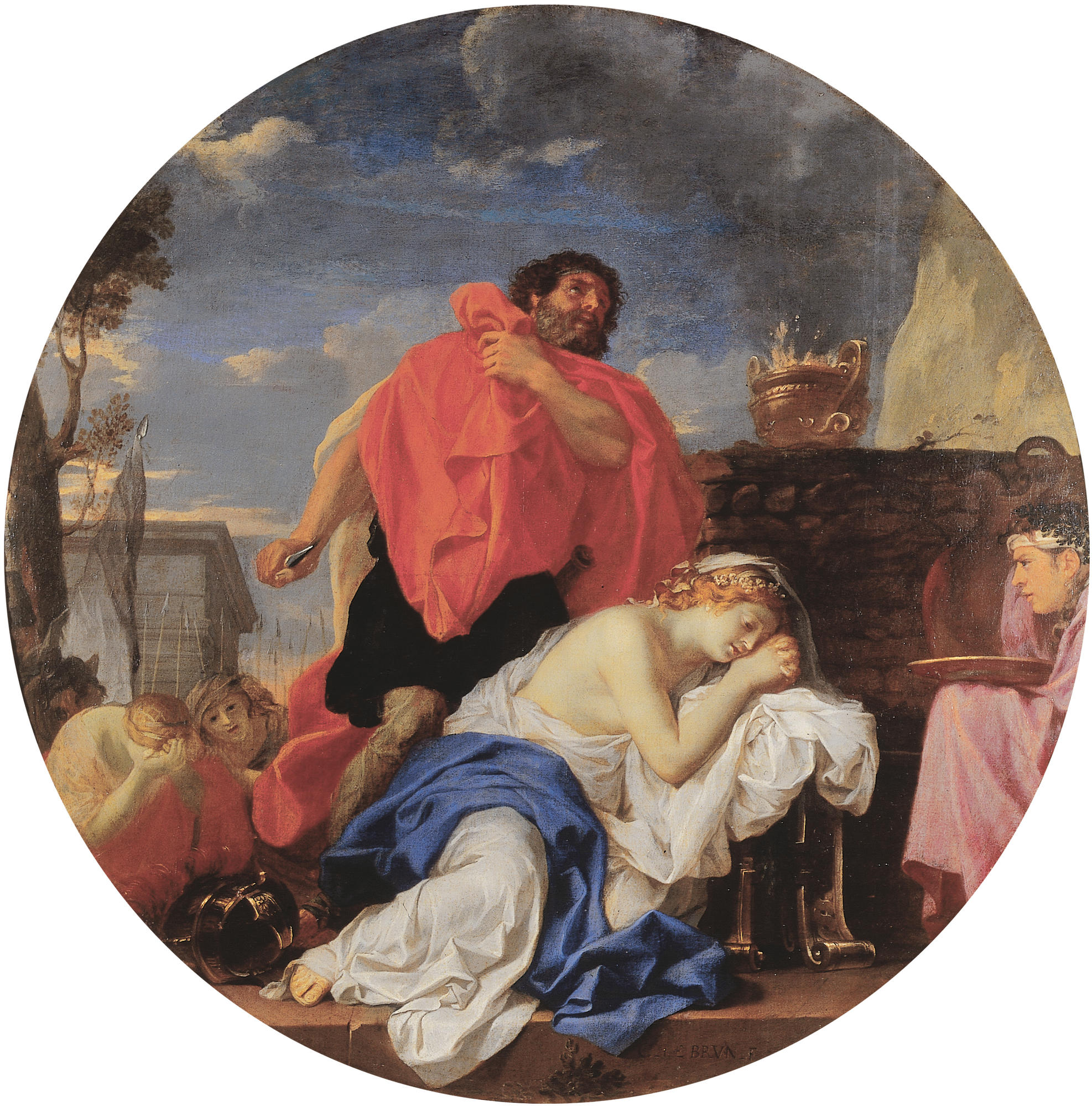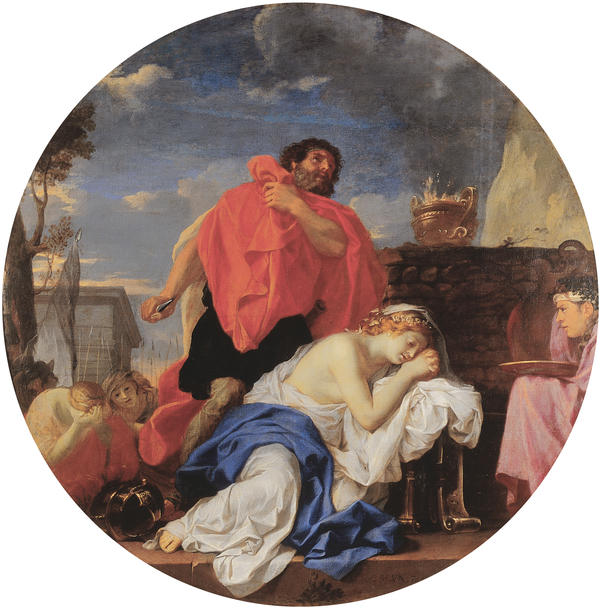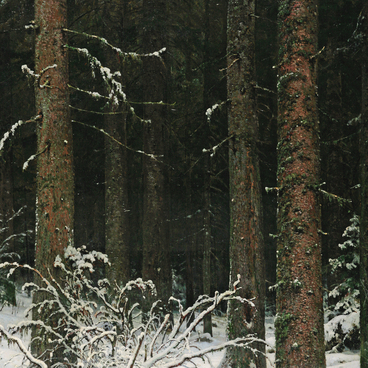In the 10th century B.C., Jephthah led the Israeli army in the battle against the Ammonites. Wishing to win, the leader of the militia army turned to God and promised in return a human sacrifice - the first person to be seen by the soldiers upon returning home. The troops defeated the enemy and set off home. And the first person who welcomed the winners was the commander’s only daughter. The young woman agreed to honour her father’s sacred vows, but only after spending 8 weeks in the mountains with her friends.
This story from the Old Testament appealed to Charles Le Brun, a French artist who became famous in the 17th century for his works on mythological and historical motifs. During his lifetime, he was declared ‘the greatest painter’ of King Louis XIV.
The artist chose oil paints for his work, and the canvas was made of 2 pieces sewn together. The central spot in the picture portrays a man in black-and-red clothing with a knife in his hand. His face reflects his suffering from the necessity to choose between the duties of a parent and of a Christian. A young girl reclines at his feet; her body is cloaked in white and blue fabrics. Her fingers are clenched as in prayer. The victim’s face hints at her despair and humility. Three other figures are featured on both sides of the key characters: shocked women in tears sit on the left-hand side and to the right stands a priest with a dish to collect fresh blood.
The key figures fully relate to the theory of “expressions” that was proposed by Charles Le Brun. Essentially, it was a catalogue that described the relationship between emotions and human facial expressions.
In the background one can see a blue sky with light and dark clouds. And closer to the viewer stands a fiery and smoking brazier, as though the ritual murder has already occurred.
Experts, however, differ in their opinions on what is described in the Book of Judges. Some believe that Jephthah’s child was killed and burned in the name of the Lord. Others presume that she remained alive and served in the temple, without a chance of getting married and bearing grandchildren.
Although biblical motifs were typical of classicism, the painting quite impressed the artist’s contemporaries. For instance, Jean-Baptiste Dubeaux, an abbot and diplomat, proclaimed the picture a model of morality and edification in art.
All we know at the moment is that the Sacrifice of Jephthah was commissioned by a certain Ponce, who was secretary to Pierre Séguier, Chancellor of the country and a member of the French Academy. In later years, the notable owners of the painting included Joseph Fesch, Archbishop and uncle of Nicholas I, as well as Fyodor Semyonovich Mosolov, krigszalmeister and horse breeder.
This story from the Old Testament appealed to Charles Le Brun, a French artist who became famous in the 17th century for his works on mythological and historical motifs. During his lifetime, he was declared ‘the greatest painter’ of King Louis XIV.
The artist chose oil paints for his work, and the canvas was made of 2 pieces sewn together. The central spot in the picture portrays a man in black-and-red clothing with a knife in his hand. His face reflects his suffering from the necessity to choose between the duties of a parent and of a Christian. A young girl reclines at his feet; her body is cloaked in white and blue fabrics. Her fingers are clenched as in prayer. The victim’s face hints at her despair and humility. Three other figures are featured on both sides of the key characters: shocked women in tears sit on the left-hand side and to the right stands a priest with a dish to collect fresh blood.
The key figures fully relate to the theory of “expressions” that was proposed by Charles Le Brun. Essentially, it was a catalogue that described the relationship between emotions and human facial expressions.
In the background one can see a blue sky with light and dark clouds. And closer to the viewer stands a fiery and smoking brazier, as though the ritual murder has already occurred.
Experts, however, differ in their opinions on what is described in the Book of Judges. Some believe that Jephthah’s child was killed and burned in the name of the Lord. Others presume that she remained alive and served in the temple, without a chance of getting married and bearing grandchildren.
Although biblical motifs were typical of classicism, the painting quite impressed the artist’s contemporaries. For instance, Jean-Baptiste Dubeaux, an abbot and diplomat, proclaimed the picture a model of morality and edification in art.
All we know at the moment is that the Sacrifice of Jephthah was commissioned by a certain Ponce, who was secretary to Pierre Séguier, Chancellor of the country and a member of the French Academy. In later years, the notable owners of the painting included Joseph Fesch, Archbishop and uncle of Nicholas I, as well as Fyodor Semyonovich Mosolov, krigszalmeister and horse breeder.



